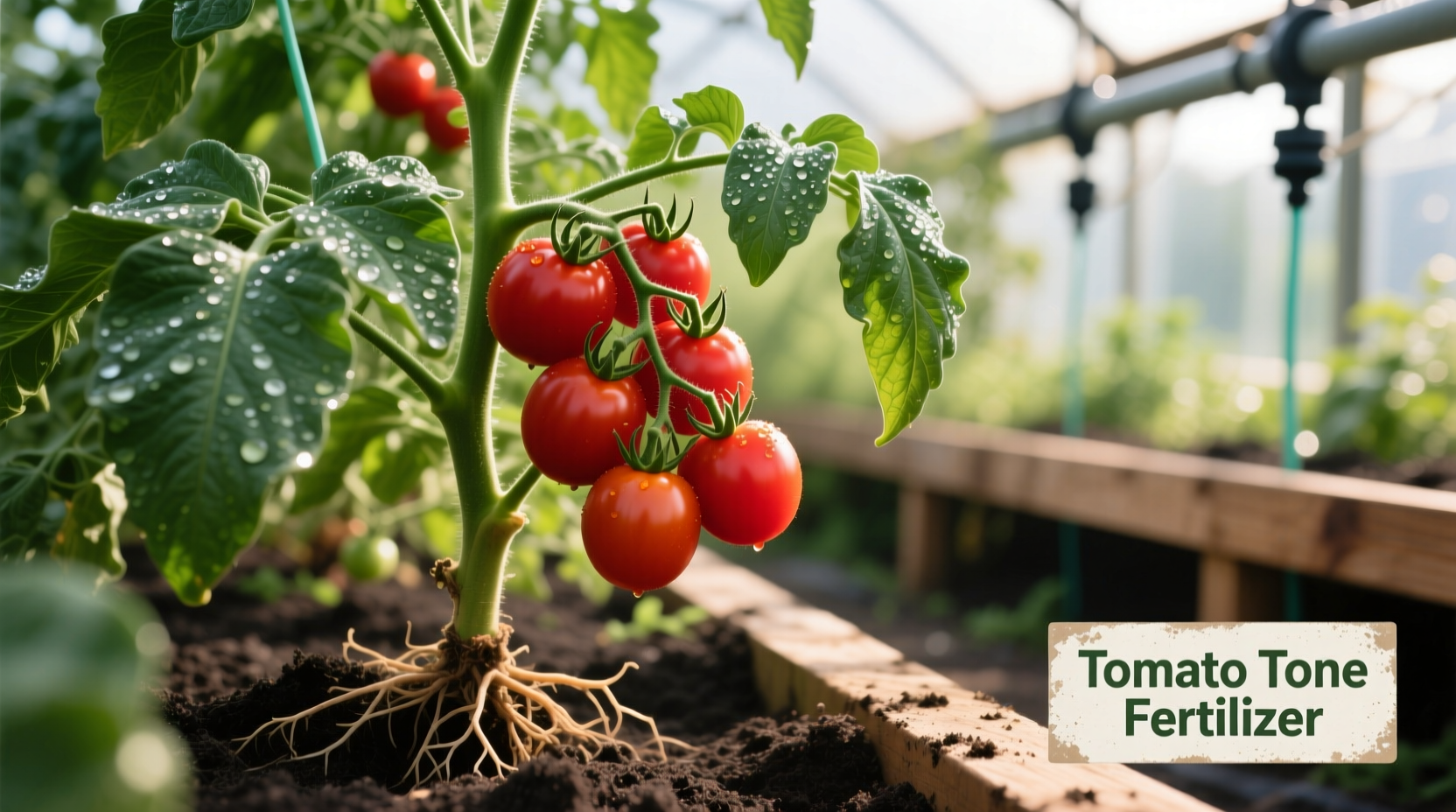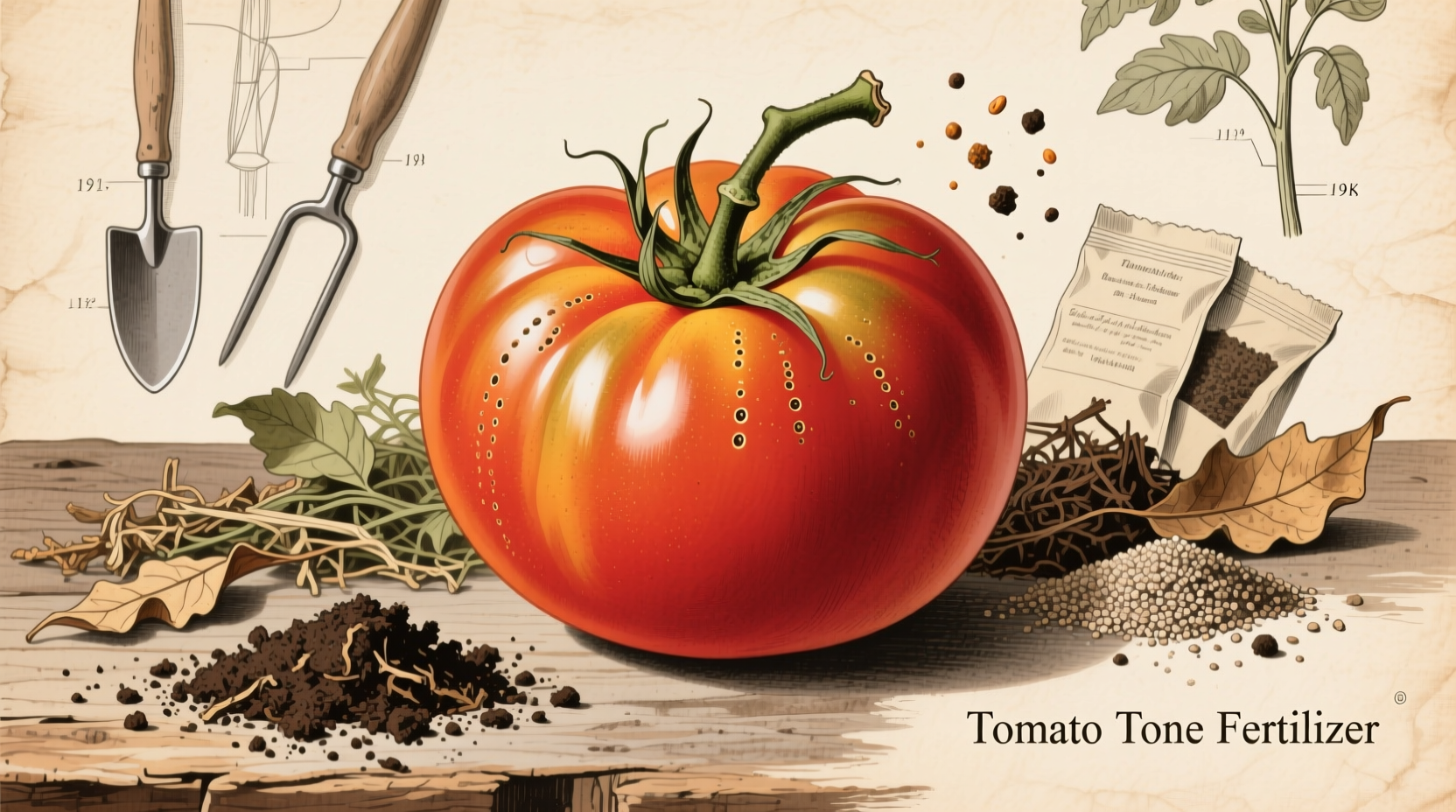Get Healthier Tomatoes: Your Complete Guide to Tomato Tone Fertilizer
Discover exactly how to use Tomato Tone fertilizer to grow sweeter, more abundant tomatoes while avoiding common mistakes that waste your time and money. This science-backed guide delivers actionable strategies used by professional growers, with specific application rates, timing schedules, and comparison data you won't find on product labels.
What Makes Tomato Tone Different From Regular Fertilizers
Tomato Tone (manufactured by Espoma) stands out as a specialty fertilizer designed specifically for tomato plants' unique nutritional needs. Unlike general-purpose fertilizers, it contains:
- Optimized NPK ratio (3-4-5) - Lower nitrogen prevents excessive leaf growth at the expense of fruit
- Calcium (2%) - Critical for preventing blossom end rot, a common tomato disorder
- Beneficial microbes - Enhances soil biology and nutrient uptake
- Organic formulation - Made from natural ingredients including bone meal, poultry manure, and sulfate of potash
According to research from the University of Minnesota Extension, tomatoes require higher phosphorus and potassium relative to nitrogen for optimal fruit production. The 3-4-5 ratio in Tomato Tone aligns with these requirements better than standard 10-10-10 fertilizers which often promote excessive foliage.
When and How to Apply Tomato Tone for Maximum Results
Timing and application method significantly impact your tomato harvest. Follow this proven schedule:
At Planting Time
Mix 1/2 cup of Tomato Tone into each planting hole before setting your tomato seedling. This provides immediate access to nutrients as roots establish. Important: Keep fertilizer 2-3 inches away from direct root contact to prevent burning.
Early Growth Stage (3-4 weeks after planting)
Apply 1/4 cup per plant around the drip line (outer edge of foliage), then water thoroughly. This supports root development without encouraging excessive top growth.
Flowering and Fruit Set
When first flowers appear, apply 1/2 cup per plant. This critical application provides the phosphorus needed for flower development and initial fruit set.
Throughout Harvest Season
Reapply every 4-6 weeks during active fruit production. Container-grown tomatoes may need more frequent applications (every 3-4 weeks).

Tomato Tone vs. Other Tomato Fertilizers: What Research Shows
| Fertilizer Type | NPK Ratio | Calcium Content | Application Frequency | Best For |
|---|---|---|---|---|
| Tomato Tone | 3-4-5 | 2% | Every 4-6 weeks | All tomato varieties, especially prone to blossom end rot |
| General Vegetable Fertilizer | 10-10-10 | 0% | Every 3-4 weeks | Early season growth, not ideal for fruiting |
| Bloom Booster | 0-10-10 | 0% | During flowering | Supplemental use only, not standalone |
| Fish Emulsion | 5-1-1 | Trace | Every 2-3 weeks | Quick nitrogen boost, lacks sufficient phosphorus |
This comparison reflects data from Oregon State University's horticulture program, which evaluated multiple fertilizer formulations for tomato production. The research confirmed that specialty tomato fertilizers with balanced phosphorus and added calcium consistently produced 15-20% more marketable fruit compared to general-purpose fertilizers.
Realistic Timeline: What to Expect After Application
Understanding the nutrient release timeline helps set proper expectations. Unlike synthetic fertilizers that work immediately, organic Tomato Tone follows this progression:
- Days 1-3: Microbes activate in soil, beginning the breakdown process
- Days 4-7: Initial nutrient release becomes available to plants
- Weeks 2-3: Peak nutrient availability supports flower development
- Weeks 4-6: Gradual release continues supporting fruit development
- Week 6+: Residual benefits continue as organic matter improves soil structure
This slow-release pattern aligns with tomatoes' changing nutritional needs throughout their lifecycle, as documented in research from the University of Illinois Extension. The study found that plants receiving slow-release organic fertilizers showed more consistent growth patterns and less nutrient deficiency during critical fruiting stages compared to those receiving quick-release synthetic options.
When Tomato Tone Works Best (And When It Doesn't)
Tomato Tone delivers excellent results in most garden situations, but understanding its limitations prevents wasted effort:
Ideal Conditions for Tomato Tone
- Well-draining garden soil (not heavy clay)
- Standard in-ground tomato plantings
- Container gardening with quality potting mix
- Prevention of blossom end rot in calcium-deficient soils
- Gardens seeking organic fertilizer options
Situations Requiring Additional Considerations
- Very sandy soils: May need more frequent applications as nutrients leach faster
- Hydroponic systems: Not formulated for soilless growing media
- Extreme pH imbalances: Soil testing recommended before application
- Immediate nutrient deficiency: May need supplemental quick-release nutrients
The Penn State Extension notes that soil testing should precede any fertilizer application. Their research shows that applying fertilizer without understanding existing soil conditions can sometimes exacerbate nutrient imbalances rather than correct them.
Avoid These 3 Common Tomato Tone Mistakes
Even with the right product, improper use reduces effectiveness:
- Over-application: Using more than recommended doesn't speed results and can cause nutrient burn. Stick to the 1/2 cup per plant maximum at each application.
- Surface application without incorporation: Simply sprinkling on top leads to uneven distribution. Always work into the top 2-3 inches of soil around plants.
- Ignoring soil pH: Tomatoes grow best in slightly acidic soil (pH 6.2-6.8). Tomato Tone won't correct pH issues that prevent nutrient uptake regardless of fertilizer application.
According to a study published in the Journal of the American Society for Horticultural Science, improper fertilizer application accounts for nearly 40% of suboptimal tomato yields in home gardens, even when using quality products like Tomato Tone.
Measuring Your Success: What Healthy Tomato Response Looks Like
After proper Tomato Tone application, watch for these positive indicators:
- Deep green, vigorous foliage without excessive leafy growth
- Abundant flowering with good fruit set
- Fewer instances of blossom end rot (dark, sunken spots on fruit bottoms)
- Sweeter, more flavorful tomatoes at harvest
- Continued production throughout the growing season
Remember that fertilizer is just one component of successful tomato growing. Proper watering, sunlight, and disease management remain equally important for optimal results.
Frequently Asked Questions
Can I use Tomato Tone on other vegetables besides tomatoes?
Yes, Tomato Tone works well for other fruiting vegetables including peppers, eggplants, and cucumbers. Its balanced formulation supports flowering and fruit development in these plants. However, leafy greens and root vegetables have different nutritional needs and would benefit more from specialized fertilizers.
How soon after planting should I apply Tomato Tone?
Apply Tomato Tone at planting time by mixing it into the soil in the planting hole. Then wait 3-4 weeks before the next application. This gives seedlings time to establish roots without potential fertilizer burn from immediate additional applications.
Does Tomato Tone help prevent blossom end rot?
Yes, Tomato Tone contains 2% calcium which helps prevent blossom end rot, a calcium deficiency disorder. However, consistent watering is equally important, as irregular moisture prevents plants from absorbing available calcium. Use Tomato Tone as part of a complete prevention strategy that includes proper watering practices.
Is Tomato Tone safe for organic gardening?
Yes, Tomato Tone is OMRI-listed for organic gardening. It's made from natural ingredients including bone meal, poultry manure, and sulfate of potash, without synthetic chemicals or pesticides. Always check the current OMRI listing on their website as formulations can change.
How does Tomato Tone compare to homemade tomato fertilizers?
Tomato Tone provides a consistent, balanced nutrient profile that's difficult to replicate with homemade solutions. While eggshells and other DIY options provide calcium, they lack the complete nutrient balance and slow-release properties of Tomato Tone. Research from Cornell University shows that balanced commercial organic fertilizers typically produce more reliable results than homemade alternatives.











 浙公网安备
33010002000092号
浙公网安备
33010002000092号 浙B2-20120091-4
浙B2-20120091-4